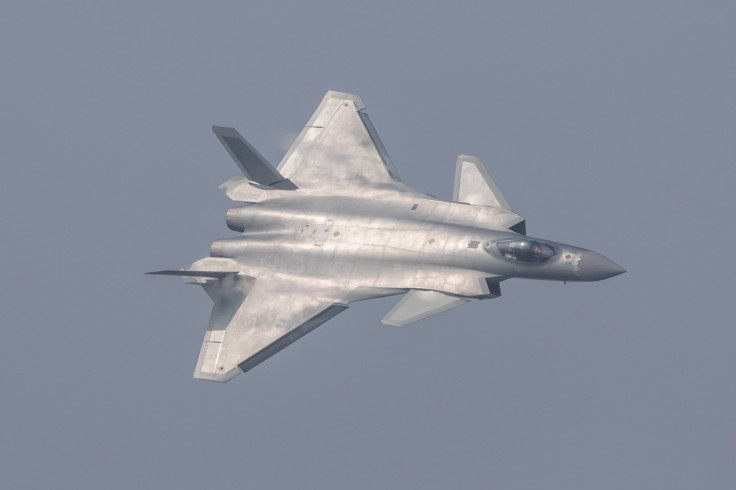Upgrade For 'Mighty Dragon': China Wants Its Homegrown J-20 Fighter To Challenge The F-22 Raptor
KEY POINTS
- The checks on the new WS-15 engine are expected to be over by 2023
- F-22 Raptor has technology that controls the direction of the engine thrust
- This allows the U.S.-made Lockheed Martin jets to do sudden maneuvers
China is planning an upgrade for its homegrown stealth jet J-20 to ensure the fighters are on par with the US F-22 Raptor. The People's Liberation Army (PLA) had recently demonstrated the combat readiness of the J-20s.
The jets, named Mighty Dragon, will be fitted with new thrust-vectoring nozzles replacing the WS-10C stopgap engines, reported South China Morning Post, quoting Chinese military sources.
While the stopgap engines limit their speed and combat capabilities, the thrust-vectoring nozzles technology is expected to help it compete with the U.S.-made Lockheed Martin F-22 Raptor.
The Raptor is equipped with a technology that controls the direction of the engine thrust, allowing the jet to perform sudden maneuvers.
To take on the Raptors, Chinese engineers have been working on a high-thrust engine, known as the WS-15, for two decades. However, the project got inordinately delayed, following which the Mighty Dragon had to do with WC-10C as a stopgap option.
"Because verification of the two-dimensional thrust-vectoring nozzles, the technology used by the F-22, has been completed, the maneuverability and stealth capability of the J-20s will be upgraded," an unnamed military source was quoted by the news outlet.
The report added that the checks on the WS-15 engine are currently on and are expected to be completed by 2023. The source said there wouldn't be any "technological problems" as both the engines were similar in size and shape.
China is planning to deploy about 200 J-20s to its force and the Mighty Dragons currently are involved in the units that handle Taiwan Strait and the East China Sea.
Last week, Chinese state-backed media Global Times reported that the PLA held intensive training sessions involving the J-20s earlier the month, which displayed the fighters' "high level of combat readiness."
During the night combat drills, the fifth-generation warplanes reportedly displayed their “all-time and all-weather” combat readiness throughout the exercise .
The Mighty Dragons were also reportedly not using Luneburg lenses, the radar reflectors which make stealth aircraft visible during training.
"It’s the first time the PLA showed simulated dogfight drills between different J-20 brigades, which is supposed to be regular training for PLA fighter jet pilots. But the thrust of the J-20 will still lag behind the US F-22, until China delivers the WS-15 engines for the aircraft," Macau-based military observer Antony Wong Tong told South China Morning Post.

© Copyright IBTimes 2025. All rights reserved.





















